DIY Recipe: How to Make Your Own Homemade Toothpaste

Ready to turn away from store-bought toothpaste and try making a natural DIY version?
Learn about the active ingredients, options and step-by-step instructions for making your own homemade toothpaste.
Estimated reading time: 10 minutes
You're in good company if you’re looking for recipes for making your own natural health and beauty products.
For the past few years, my daughters and I have been experimenting with creating our own homemade soaps and other natural products. We recently tried our hand at sunscreen. Our next project is bug spray.
In the meantime, we’ve been experimenting with natural toothpaste recipes. And we finally came up with one that uses simple ingredients for our own natural toothpaste.
I recommend making one little jar of toothpaste for each member of your household. After all, you’ll be dipping your toothbrush directly into it and you don’t want to share germs.
And this way, everyone could even get their own flavor and texture just how they like it.
This recipe uses a base of coconut oil, baking soda, and bentonite clay.
Coconut oil helps prevent plaque deposits, bleeding gums, and bad breath.
Baking soda has natural whitening properties and is a gentle exfoliant to remove plaque.
And bentonite clay remineralizes, detoxifies, and polishes teeth.
Essential oils are antibacterial to help kill germs and freshen breath.
Want the printable recipe card? Scroll down to the bottom! ⬇️⬇️⬇️
IngredientsHere’s what you’ll need to make your own toothpaste
- 1 Tablespoon organic coconut oil
- 2 Tablespoons baking soda
- ⅓ cup bentonite clay
- 1-2 teaspoons stevia powder
- 2 tablespoons water
- Essential oils
Choose one or a combination of these antibacterial essential oils
- Grapefruit Oil
- Peppermint Oil
- Tea Tree Oil
- Orange Oil
- Lemongrass Oil
Here’s how to make your own toothpaste at home.
- Melt coconut oil in the microwave until it is liquid.
- Combine all ingredients except water and in a glass bowl and stir well to combine, use a wooden or rubber spatula rather than metal to mix.
- Add two teaspoons of water at a time, just until you form a paste that is easy to scoop onto the toothbrush.
- Transfer to a small glass jar with a lid.
To use, apply a small amount to your damp toothbrush and brush as you normally would.
The perks that come with whipping up your own homemade toothpaste og beyond avoiding tooth decay and maintaining good oral health.
Healthier IngredientsSay goodbye to artificial sweeteners and hello to natural ingredients like baking soda and coconut oil when you make homemade toothpaste.
Baking soda is a great cleaner and helps neutralize mouth acids, while coconut oil boasts antibacterial properties.
This means fewer toxic ingredients in your body, which can benefit overall health.
No Fluoride ConcernsYou've probably heard debates over fluoride in commercial toothpaste due to its potential risks associated with excessive intake. Here are some insights on this topic.
The beauty of making your own paste at home is that most recipes don't include fluoride - so no worries.
Eco-Friendly ChoiceMany of our readers are on a quest to reduce waste. And moving away from store-bought products translates into less plastic packaging in landfills or oceans.
This is one reason we’re experimenting with our own cleaning and kitchen products too, including pine cleaner and our DIY toilet bombs.
And in the kitchen we’re slowly replacing our plastic wrap and tin foil with beeswax wraps.
And now we’re taking steps toward environmental conservation efforts by creating DIY toothpaste stored in small mason jars.
Savings Over TimeNatural ingredients may seem costly upfront compared to commercial pastes right off the shelf; however, consider how little you use per batch.
Plus, these items often serve multiple purposes (think baking soda for cleaning tasks or cooking with coconut oil), leading to potentially future significant savings.
Now, making your own homemade toothpaste might seem like a daunting task.
But let's face it, the journey to natural oral health isn’t always paved with easy options from store shelves.
The reality of making homemade toothpaste, however, might surprise you. It's simpler than you think and can involve as few as just two ingredients. And beyond that simplicity lies an array of benefits for your health and wallet.
Baking Soda: The Base IngredientThe cornerstone ingredient in our homemade recipe for toothpaste is none other than humble baking soda.
Its natural abrasive qualities make small work of plaque removal, while its ability to neutralize harmful mouth acids is important in preventing cavities.
Healthline offers more insights on this versatile substance. And by the way, the baking soda toothpaste recipe is one of the easiest DIY toothpaste recipes around. Simply brush your teeth with baking soda and a few drops of water if you don't have your regular toothpaste on hand.
Bentonite Clay: A Natural DetoxifierIn our DIY toothpaste formula, we also use bentonite clay, a natural detoxifier known for removing toxins from the mouth. It lends a smoother texture to the paste, too, so it doesn’t seem so gritty.
Coconut Oil: For Moisture and Antibacterial PropertiesCoconut oil serves dual purposes in our toothpaste. It adds moisture while acting against oral bacteria responsible for bad breath or even gum disease due to its lauric acid content.
Add Flavor with SteviaSo one criticism I’ve often had with storebought natural toothpastes is they taste awful. So I decided to try stevia, a plant-based natural sweetener. It improves the taste. Even better, Medical News Today tells us it could offer its own potential oral health benefits.
Read this before you get started making your own toothpaste.
Choose High-Quality IngredientsThe first step in making a good DIY toothpaste is choosing top-notch ingredients.
Opting for unrefined coconut oil, food-grade bentonite clay, and non-GMO stevia extract ensures you get all the natural benefits without unwanted additives.
Remember, maintaining good oral health starts with what goes into your mouth - so quality matters.
Achieving the Right ConsistencyYour natural homemade toothpaste should feel just as good on your teeth as it tastes. So consider your ratios and keep an eye on the texture when making your own.
For example, mix baking soda and coconut oil together until you get a paste-like texture.
If it feels too thick or thin, adjust accordingly till you find what works best for you.
Add Essential Oils for FlavoringTo give your own DIY toothpaste an extra punch of flavor while boosting its antibacterial properties, try adding essential oils like peppermint or spearmint if you like a minty taste.
Other options include cinnamon or lemon essential oil.
Just remember - these potent drops pack quite a punch, so add just 1 - 3 drops at first.
Prioritize Hygiene When MixingLastly, always prioritize hygiene when preparing homemade products, especially ones used in oral care routines like this one.
Make sure every utensil, container, and even workspace is squeaky-clean before starting to ensure optimal dental health.
If you don't know how best to store your homemade toothpaste, don't worry. You have a few options, but let me tell you - glass jars work best.
Picking Your Perfect ContainerYou've made a batch of natural toothpaste with love; now it needs a home. A clean, air-tight glass jar is just right for this job.
Ensure you sterilize it thoroughly before use so as not to introduce unwanted elements into your DIY oral hygiene product.
Glass jars aren't only practical but also environmentally friendly since they're reusable and recyclable - a bonus in our pursuit of self-reliance and reduced household waste.
Maintaining That Freshness FactorTo keep your homemade toothpaste fresh and effective longer, stash it somewhere cool and dry away from direct sunlight, which can degrade some ingredients over time.
The key here is cleanliness. Always scoop out what you need using a clean spoon or spatula instead of dipping your brush directly into the jar. Remember, we don’t want any bacteria spoiling our all-natural mix.
Lifespan Expectancy Of Homemade ToothpasteNatural products, such as natural toothpaste, generally have a shorter shelf life than commercial products, such as conventional toothpaste.
Your homemade toothpaste should last 1-2 months, depending on its specific ingredients. However, if you notice unexpected changes in color, texture or smell though - take heed. It might be time for another fun session to make more.
Frankly, that all depends on the dentist. Some dentists might not advocate for homemade toothpaste due to the lack of fluoride, a key ingredient in fighting cavities.
However, others may support it if made with cavity-fighting ingredients like baking soda.
What are the benefits of using homemade toothpaste?Making your own toothpaste allows you to control what goes into it.
It can be free from artificial sweeteners, preservatives, and colors found in commercial products, offering a natural alternative for oral health. It can help you save money and reduce your household waste too.
How long is homemade toothpaste good for?When stored properly in an airtight container at room temperature, most homemade toothpaste should stay fresh for one to two months.
What are some random facts about toothpaste?Toothpaste has been around since 5000 BC when Egyptians started using a paste to clean their teeth. However, the modern version as we know it didn't appear until the late 19th century.
Homemade toothpaste is more than just a DIY project. It's an opportunity to take control of your oral health.
Natural ingredients like baking soda, bentonite clay, coconut oil, and stevia can be combined to create effective toothpaste at home, and the benefits are many. They include everything from avoiding harmful chemicals in commercial products to promoting healthier gums and teeth with natural alternatives.
Making it yourself also allows for customization according to personal preferences and needs. Storage is simple, too; glass jars work perfectly well, and homemade toothpaste has a good shelf life when stored properly.
You can customize the flavor by changing up your essential oils and creating a toothpaste that everyone in the family will enjoy.
If this journey towards self-reliance resonates with you, consider exploring other aspects of off-grid living on An Off Grid Life. Here we share valuable insights into homesteading, wilderness living, and everything related to leading a sustainable lifestyle away from the hustle-bustle of modern cities.
Discover how making small changes like switching to homemade toothpaste can contribute significantly towards building an eco-friendly existence that aligns with nature rather than working against it.
Enjoyed the project?
Ingredients
- 1 Tablespoon organic coconut oil
- 2 Tablespoons baking soda
- ⅓ cup bentonite clay
- 1-2 teaspoons stevia powder
- 2 Tablespoons water
- Essential oils
Instructions
- Melt coconut oil in the microwave until it is liquid.
- Combine all ingredients except water and in a glass bowl and stir well to combine, use a wooden or rubber spatula rather than metal to mix.
- Add water just a couple teaspoons at a time until you form a paste that is easy to scoop onto the toothbrush.
- Transfer to a small glass jar with a lid.
The author may collect a small share of sales from the links on this page.


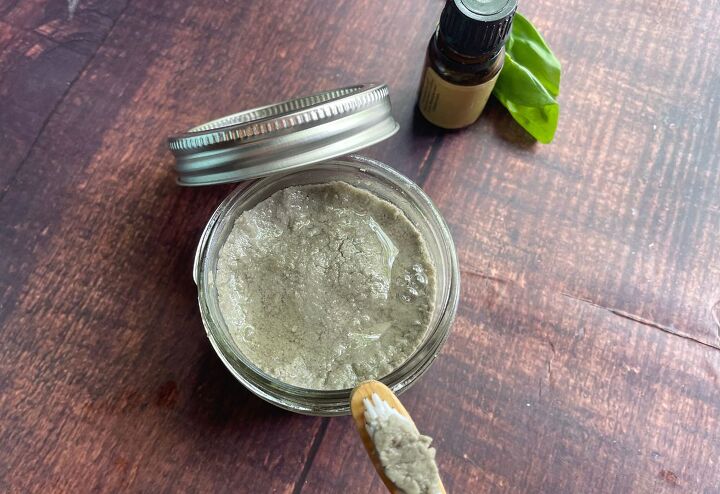








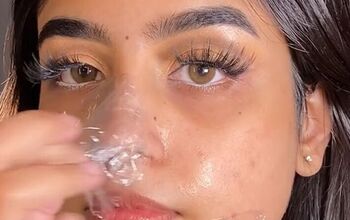
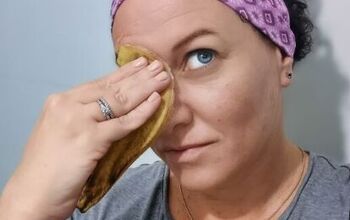


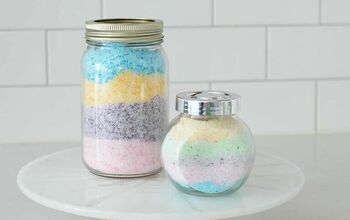


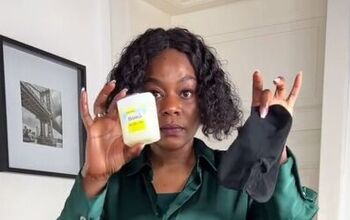

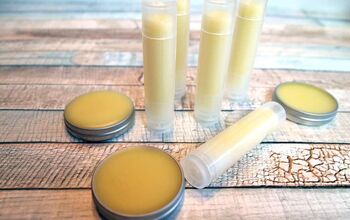
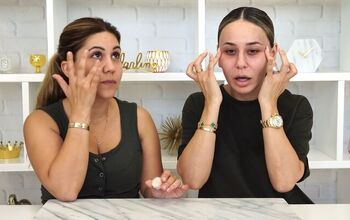

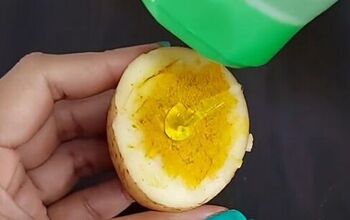

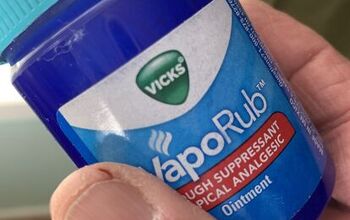


Comments
Join the conversation